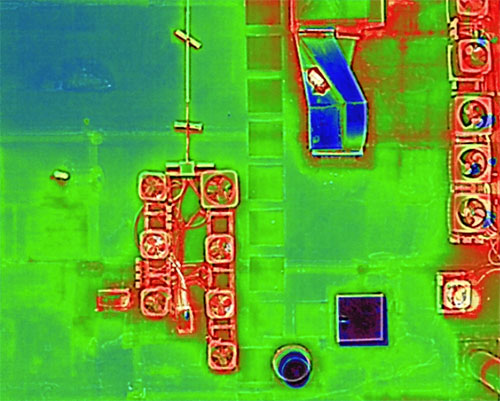Drone Payloads Vs. Performance: A Balancing Act
When talking about the many benefits of UAS technology, a main topic of discussion is drone payloads and what they can accomplish.
While the aircraft itself is undoubtedly a crucial component of the system, most of the valuable data collected comes from whatever payload is mounted on the aircraft. Payloads come in many different configurations, from RGB cameras to thermal optics and LiDAR.
Size, shape, weight, and power requirements vary significantly between various payloads. When selecting which payload best suits your needs, it is essential to consider more than just the payload’s capabilities. The effect your payload has on UAV performance needs to be considered as well.
If one were to look at each piece of a drone, you could identify many ways in which payloads affect system components. For example, how much a payload weighs will impact how hard the rotors need to work.
A detailed review of each part of the drone would be interesting, but probably overkill— unless you are looking at the issue from an engineering standpoint.
In most cases, there are two considerations a drone pilot or someone planning drone operations should keep in mind: Performance specific to aerodynamics & maneuverability, and the payload’s impact on flight times.
Let’s break it down.
Maneuverability & Center of Gravity
Aerodynamics and maneuverability relate to how the drone handles.
As most pilots will tell you, aircraft maneuver on a center of gravity and can rotate around that center of gravity along three axes: pitch, yaw, and roll.
Pitch refers to the axis from wing tip to wing tip and moves the aircraft’s nose up or down. Yaw is the axis that travels through the aircraft from top to bottom through the center of gravity, rotating the aircraft from left to right on a level plane. Finally, roll is the axis on a traditional airplane from nose to tail and moves the wings up or down.
Though many drones are quadcopters and have different shapes, the aerodynamic principles remain the same. The design of a given UAV has a specific center of gravity for optimal stability and performance. When adding payloads to a drone, the center of gravity moves, changing how the aircraft handles on the three axes.
When drone payloads are designed to work with specific systems, they usually account for this issue. For example, the DJI Inspire series has several payload options that can be added and removed from the drone as desired. Each payload is engineered to have minimal impact on maneuverability.
If instead, you flew a DJI Mavic 2 Pro and decided to add third-party manufactured external lights to the drone or a multispectral camera, they would have a greater chance of making the drone difficult to maneuver. The aircraft’s original design would not account for the lights or multispectral camera you added to the airframe.
When choosing a payload, consider how the center of gravity may shift and how that could affect your ability to control the aircraft in flight.
Payloads and Flight Times
Designers and engineers have equipped UAVs with several types of power sources, from hydrogen fuel to lithium polymer batteries.
Weight is one of the main factors that affect how fast a drone consumes its fuel or battery energy. UAV payloads add weight to an aircraft and, in most cases, also draw from the drone’s power reserves.
For this reason, you will need to consider how the payload you choose affects flight times.
Manufacturer flight times are calculated in perfect conditions with no added weight. This is why you can almost never get a drone battery to last as long as the manufacturer claims they will.
As weight increases, flight time decreases. This is because the drone will need to work harder to fly.
Higher weights require the drone to produce more lift. Increased lift is accomplished by spinning the propellers faster, which draws more power from the fuel source.
Aerial mapping serves as an excellent example of how payload considerations and their effect on flight times matter.
Let us assume you need to build a map for a 200-acre parcel with a drone, using lithium polymer batteries. Using a standard RGB camera, you calculate the drone will need to use six batteries for a total flight time of two hours.
Now assume you had the same mission but opted for a camera with greater resolution and zoom features. This payload outperforms your standard RGB camera but is twice the weight.
The same task might now take 10 batteries to complete within the same two-hour flight time. You will need to consider the benefits of the camera upgrade versus the need for more batteries.
Without the capabilities of UAV payloads, drones would be far less useful to us, especially for industrial applications. Choosing the best payload for an application requires more than simply focusing on the device your drone is carrying.
Consider how your chosen payload will affect maneuverability and flight times. Only then will you get the most from your entire UAV system.

David Daly - Contributing Author
David Daly, is an award-winning photographer/writer and licensed (FAA) Commercial sUAS pilot. A graduate of the United States Naval Academy, David is a former Marine Corps officer with a BS in Oceanography and has earned his MBA from the University of Redlands. David has worked for Fortune 100 companies and has a background in aerospace, construction, military/defense, real estate, and technology.

